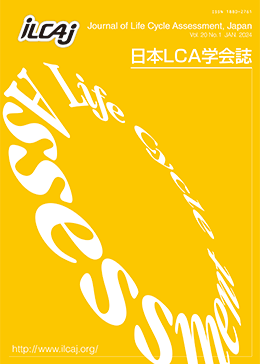Volume 20, Issue 1
Displaying 1-13 of 13 articles from this issue
- |<
- <
- 1
- >
- >|
Contents
-
2024Volume 20Issue 1 Pages Toc_1-Toc_4
Published: 2024
Released on J-STAGE: January 30, 2024
Download PDF (779K)
Foreword in New Year
-
2024Volume 20Issue 1 Pages 1
Published: 2024
Released on J-STAGE: January 30, 2024
Download PDF (780K)
General Articles
Review Article
-
2024Volume 20Issue 1 Pages 2-10
Published: 2024
Released on J-STAGE: January 30, 2024
Download PDF (929K)
Technical Report
-
2024Volume 20Issue 1 Pages 11-18
Published: 2024
Released on J-STAGE: January 30, 2024
Download PDF (1953K)
Introduction of ILCAJ Members’ Research
Commentary and Discussion
-
2024Volume 20Issue 1 Pages 19-28
Published: 2024
Released on J-STAGE: January 30, 2024
Download PDF (2109K)
Report
-
2024Volume 20Issue 1 Pages 29-33
Published: 2024
Released on J-STAGE: January 30, 2024
Download PDF (730K) -
2024Volume 20Issue 1 Pages 34
Published: 2024
Released on J-STAGE: January 30, 2024
Download PDF (1834K) -
2024Volume 20Issue 1 Pages 35-37
Published: 2024
Released on J-STAGE: January 30, 2024
Download PDF (1771K)
Introduction of Research Group
-
2024Volume 20Issue 1 Pages 38-40
Published: 2024
Released on J-STAGE: January 30, 2024
Download PDF (2538K)
Introduction of Supporting Corporate Members
-
2024Volume 20Issue 1 Pages 41-43
Published: 2024
Released on J-STAGE: January 30, 2024
Download PDF (2827K)
Supporting Members
-
2024Volume 20Issue 1 Pages 44
Published: 2024
Released on J-STAGE: January 30, 2024
Download PDF (600K)
All about ILCAJ
-
2024Volume 20Issue 1 Pages 45-47
Published: 2024
Released on J-STAGE: January 30, 2024
Download PDF (929K)
Announcement
-
2024Volume 20Issue 1 Pages i-prog_26
Published: 2024
Released on J-STAGE: January 30, 2024
Download PDF (1999K)
- |<
- <
- 1
- >
- >|
